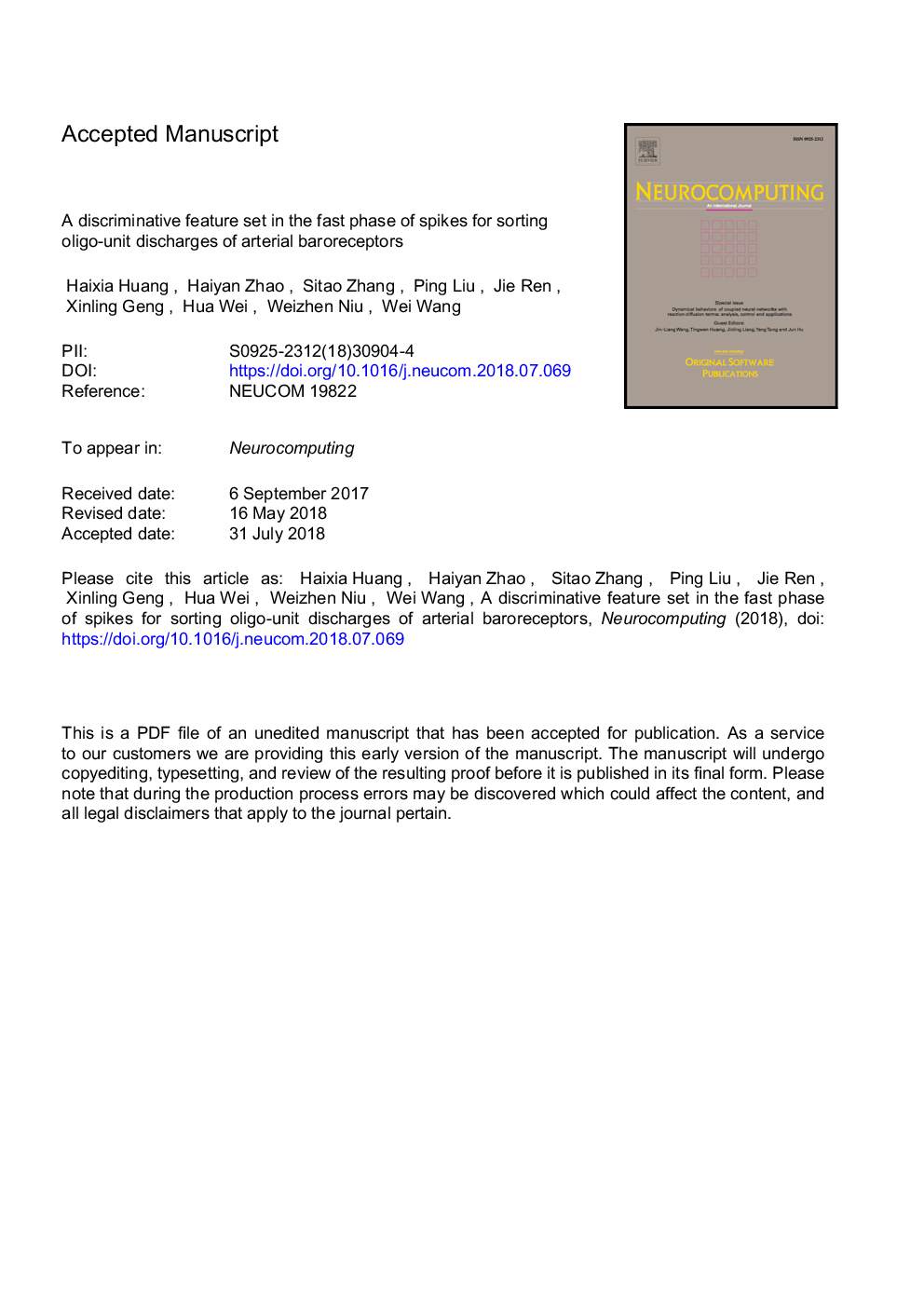| Article ID | Journal | Published Year | Pages | File Type |
|---|---|---|---|---|
| 10151112 | Neurocomputing | 2018 | 35 Pages |
Abstract
The present study was aimed to establish a simple and robust protocol that was more suitable for sorting discharges of the arterial baroreceptor. Oligo-unit (â¤â¯5) baroreceptor discharges were recorded in vitro from fine filaments of the rabbit carotid sinus nerve. Different time windows, covering the fast phase only or both the fast and slow phases of the spike were used to extract spike event data for sorting. Three measurements focusing on the fast phase of spikes-the maximum slope in the ascending limb from the half amplitude to the peak, the peak amplitude, and the width of the spike at the half amplitude-were selected as a feature set. The performance of this measurement-based analysis with subsequent K-means algorithm (MBAKM) in sorting oligo-unit discharges was compared with the performance of principal component analysis followed by K-means (PCAKM) and template matching (TM). The present study proved that: (1) MBAKM was more discriminative with less intervention than PCAKM and TM in determining the number of clusters and cluster attributions of spikes; (2) there was a higher consistency (larger intersection set) among the three algorithms with narrow windows of 0.45-0.65â¯ms than with 1.45â¯ms window. This study suggested that discriminative features were embodied in the fast phase of spikes and the oligo-unit discharges of baroreceptors could be sorted more robustly and accurately with less intervention by MBAKM than by PCAKM and TM. MBAKM with narrow time window would be promising in further studying baroreceptors and multiunit discharges from other neural structures.
Related Topics
Physical Sciences and Engineering
Computer Science
Artificial Intelligence
Authors
Huang Haixia, Zhao Haiyan, Zhang Sitao, Liu Ping, Ren Jie, Geng Xinling, Wei Hua, Niu Weizhen, Wang Wei,
